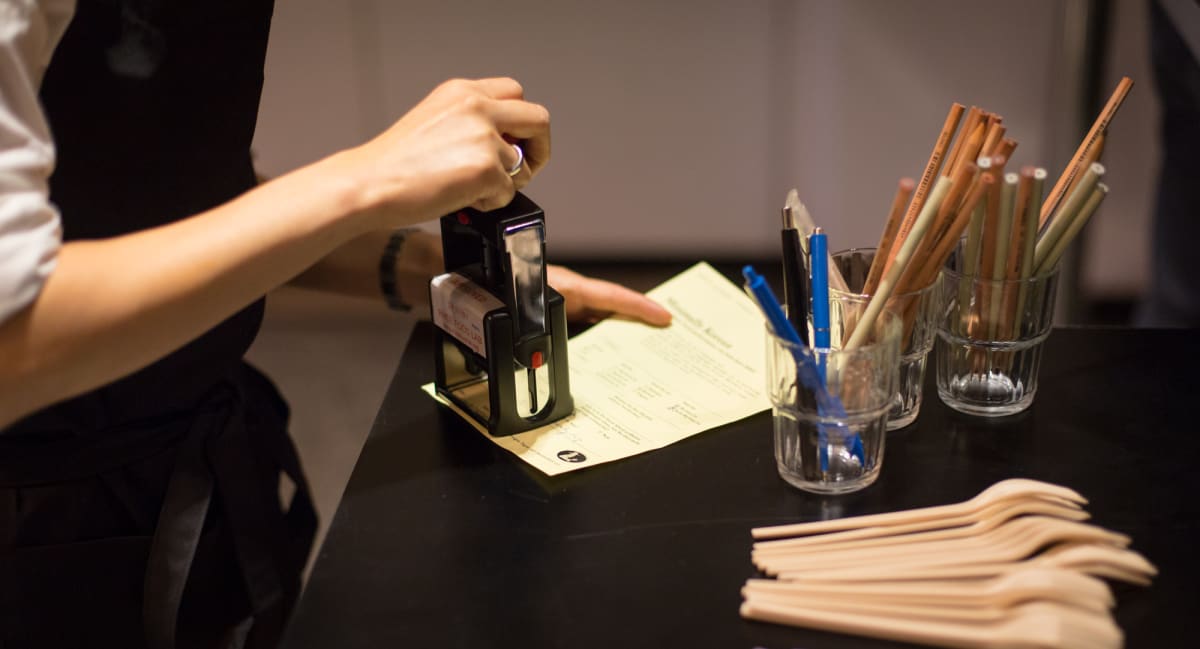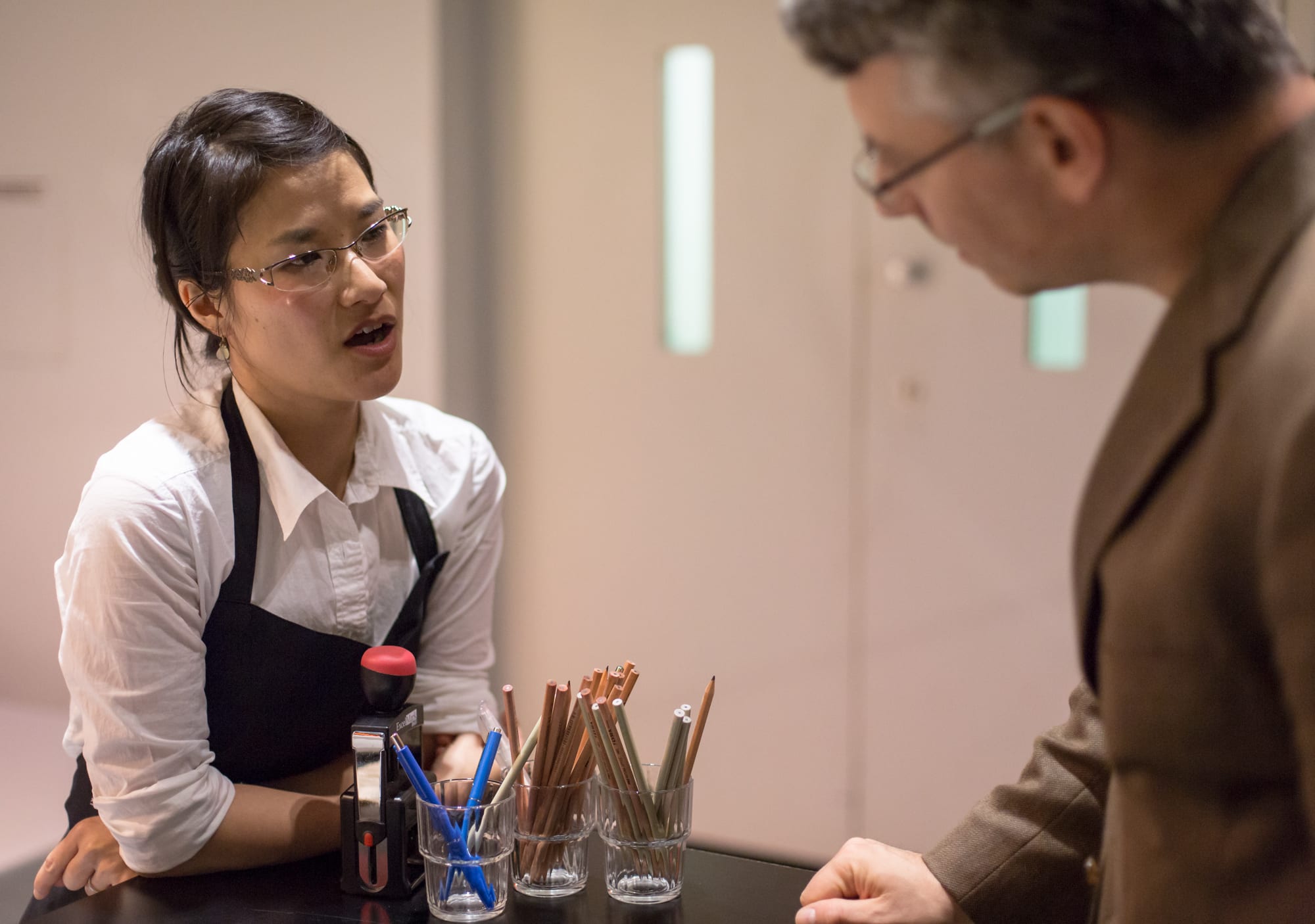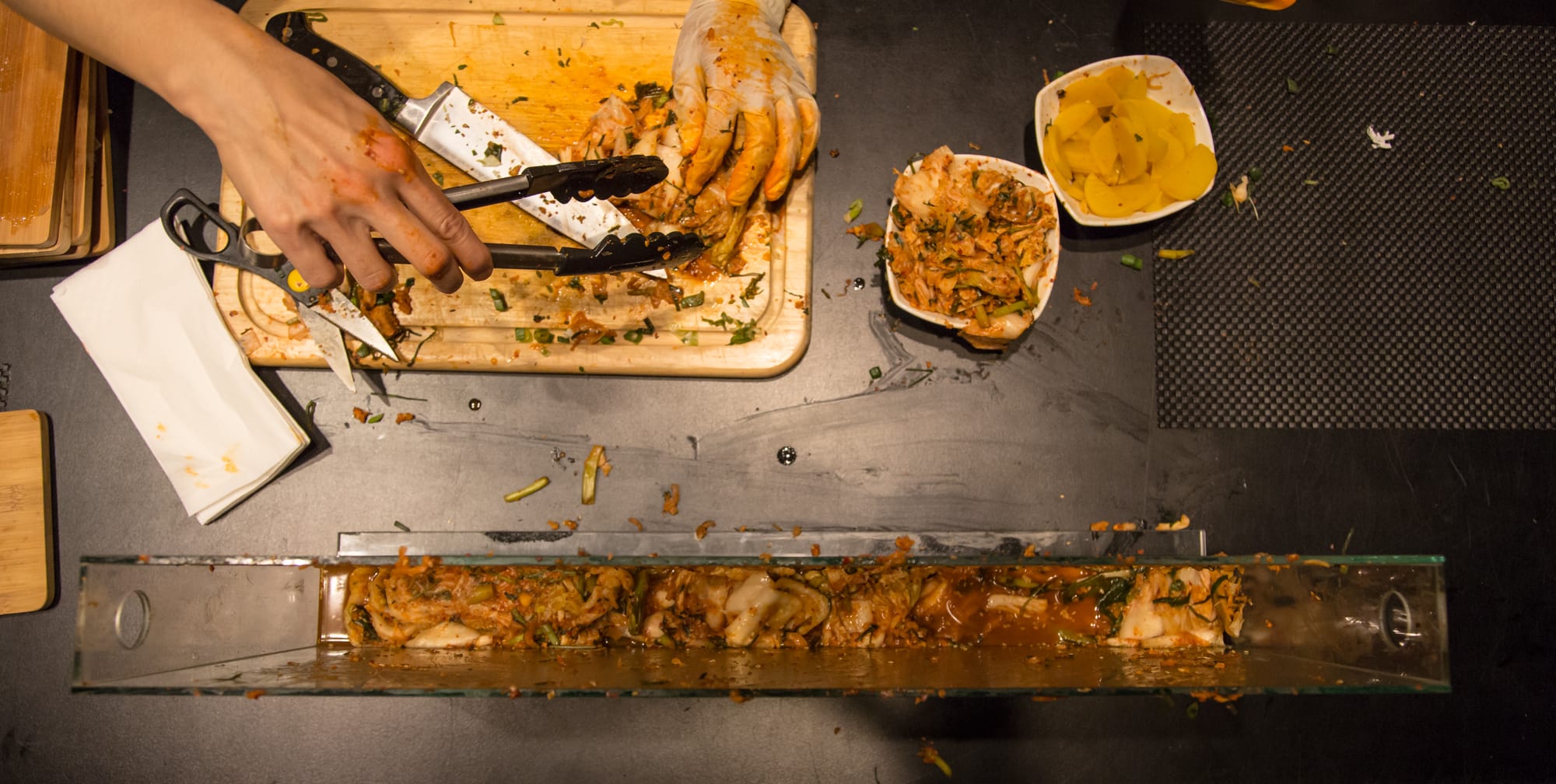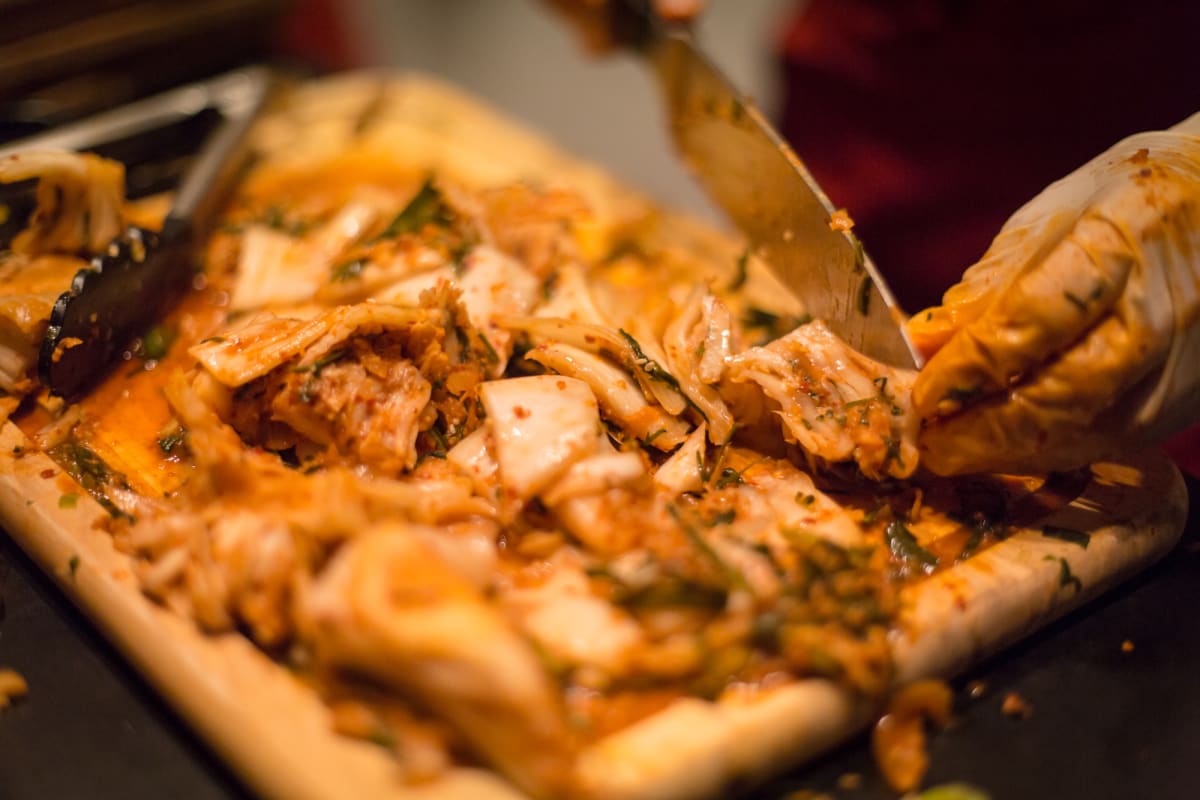What does it mean to host a “food art intervention”? What is an “edible performance”? These are good questions and essential to understanding the premise that underlies RHEE’s Minimally Korean performed at the Humboldt Lab Dahlem in 2015. The performance is a revisionist history of sorts, an intervention that disrupts the mythology of the modernist paradigm that Minimalism was an exclusively “white man’s movement.” Part of her “sincere desire to make visible to the majority what is experienced by the minority,” RHEE appropriates and reinvents Minimalism employing food as an integral critique device. As scholar Barbara Kirshenblatt-Gimblett notes, food and performance art have a long important history of association. Indeed, Minimally Korean isn’t RHEE’s first performance that involved the politics of food as a means to resist cultural norms. In 2011, she created Dr. RHEE’s Kimtschi Shop, a fake pop-up store in das Gift, a Berlin bar. “The sixty jars of homemade kimchi weren’t for sale: visitors to the ‘store’ had to produce something of equal value to kimchi in order to barter.” “Move Over Sauerkraut,” reads the header of Dr. RHEE’s Kickstarter campaign, “Berlin is for Kimtschi Lovers.” These playful slogans present a humorous front for a more serious subtext. Similarly, Minimally Korean also incorporates a playfulness despite the intervention it represents. For the project, RHEE assumes the role of ethnographer and clinical administrator, who oversees the production of three edible art works that reference “cultural artifacts” found in North America. These include a ready-made Carl Andre floor sculpture made out of square sheets of seaweed, a large glass box of kimchi referencing a color-field painting by Barnett Newman, and a replica of Donald Judd’s specific objects created from slabs of acorn jelly. RHEE purposefully enhanced the bureaucracy of the event requiring viewers to stand in long lines and to be questioned by her front desk staff, all of whom were East Asian. “This is not a restaurant,” they remind the audience. “This is a performance work.” RHEE’s workers pick participants at random, requiring them to complete a museum survey. While some participants appear to have left satisfied even content, others complained about not getting free food and were hostile particularly in response to the controlled, bureaucratic structure of the performance. A few viewers were brazen enough to try to sneak into the performance when they weren’t selected by RHEE’s staff. This range of responses, notably the push-back against following the rules of the project, point to the underlying conceptual basis of Minimally Korean. “How do you call ‘White Privilege’ in German?,” RHEE asks in her preparatory notes for the performance. Later, in her blog, RHEE summarizes the results of Minimally Korean and provides a frank diagnosis: “The demand for free food at Dahlem Museum reveals art world hubris and racist micro-aggressions.” Was the bureaucracy of the event too much for some participants? Did some take offense to the critique of Minimalism? Were some viewers uncomfortable taking orders from RHEE and her all East Asian staff? While Minimally Korean doesn’t answer these questions outright, as an intervention it puts these important queries on the table. To be clear, the tenor of dissatisfaction, on both the part of the artist and participant, is not a negative outcome of Minimally Korean. On the contrary, it is a marker of the very essence of what RHEE is resisting.
– excerpt from Winning: kate-hers RHEE and the Culture of Resistance, by Dr. Brett M. Van Hoesen, Associate Professor Art History, University of Nevada
Minimally Korean (2015)

Minimally Korean, 2015, participatory food performance and social sculpture, dried Korean seaweed as Carl Andre sculpture, glass ant house filled with Kimtschi as Barnett Newman color field painting, 10 cutting boards, acorn jelly as Donald Judd sculpture, Humboldt Lab Dahlem Museum, Berlin, 24 June 2015, photo: Aleks Slota


























